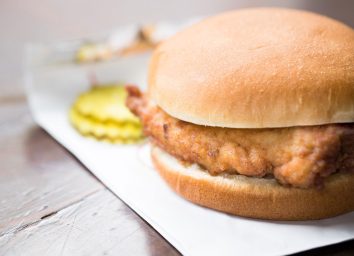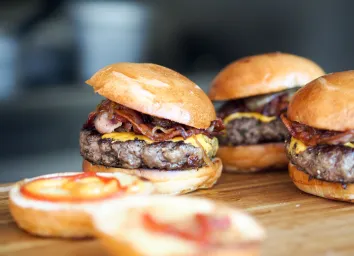How a Nutritionist Solved My Mystery Bloating

I’m a yoga teacher (and married to a health and fitness editor), so I know my way around a healthy diet. I know to check ingredients, eat healthy fats, and I’m painfully aware of the ill-effects of added sugar on my overall well-being.
Despite my health-centric lifestyle, I still experienced sugar cravings, I’ve had stomach pain and bloating for as long as I can remember, and (I kid you not) at least once a month a well-meaning stranger would ask me if I was pregnant—What to Expect When You’re Petite and Enjoy Muffins.
Although I’m a big advocate for body positivity and my job as a yoga instructor is, in part, to help people feel more comfortable in their own skin, my belly issues were starting to bug me. While a small part of my irritation stemmed from my outward appearance, my main concern was what was happening inside my body that could be causing so much discomfort.
And that’s exactly why I chose to do something about it. After consulting a gastroenterologist and ruling out food allergies, Celiac, Crohn’s Disease and colitis, I decided to try my luck with a nutritionist. Amy Shapiro, MS, RD, CDN, of Real Nutrition NYC teamed up with me for a month to help me retool my diet and manage my sweet tooth.
To get the ball rolling, Amy set me up with an account on Healthie, an all-in-one telehealth platform. Through the site, I could set goals, record metrics, and log meals and workouts. I started by filling out information about my health history and I agreed to check in with Amy weekly via video chat. I kept a record of my progress each week.
To my surprise, Amy’s advice helped me tackle my biggest problems in as little as a week. Here’s how it happened.
WEEK ONE

After reviewing my survey on Healthie, Amy offered some general guidelines and strategies based on the information I had provided. It was obvious from our first call that she’d put a lot of thought into my specific case.
I’d explained to Amy that as a yoga instructor who teaches multiple classes a day, I find it difficult to time my meals. At least three nights a week I arrive home after 10 p.m. (sometimes closer to 11 p.m.) and find myself eating very late because I don’t want to teach a class on a full belly.
She suggested I eat smaller meals more frequently, having six snack-size meals a day instead of three larger meals. She introduced me to a few healthy snacks to keep on hand so that I would never be without a healthy option between classes. Keeping my digestive issues and size in mind, she recommended Health Warrior Chia Bars, child-sized RXBars, and NuttZo 2Go organic peanut butter pouches. She devised the small-meals approach to also help alleviate mood swings, which become particularly volatile before my period because I have Pre-Menstrual Dysphoric Disorder (PMDD).
Amy gave me three initial guidelines:
1. Be prepared. No more eating my daughter’s leftover mac-‘n-cheese and tater-tots or whatever happens to be laying around.
2. Eat more easily digestible foods. Lay-off processed sugars and add ½ portions of well-cooked veggies to my raw veggies.
3. Eat small meals (indistinguishable from snacks) more frequently to even out my blood sugar levels and regulate my moods.
Immediately after our call, I ordered the healthy snacks she suggested and edited my regular Fresh Direct grocery order. No more cookies, pastries, crackers, chips or other temptations in the house! (I did get approved for my non-negotiable food: a few squares of 85 percent dark chocolate a day.)
Weighing in at 100.8 pounds, I set a goal of losing five pounds, reducing the excess fat around my belly, and alleviating frequent stomachaches and bloating.
WEEK TWO
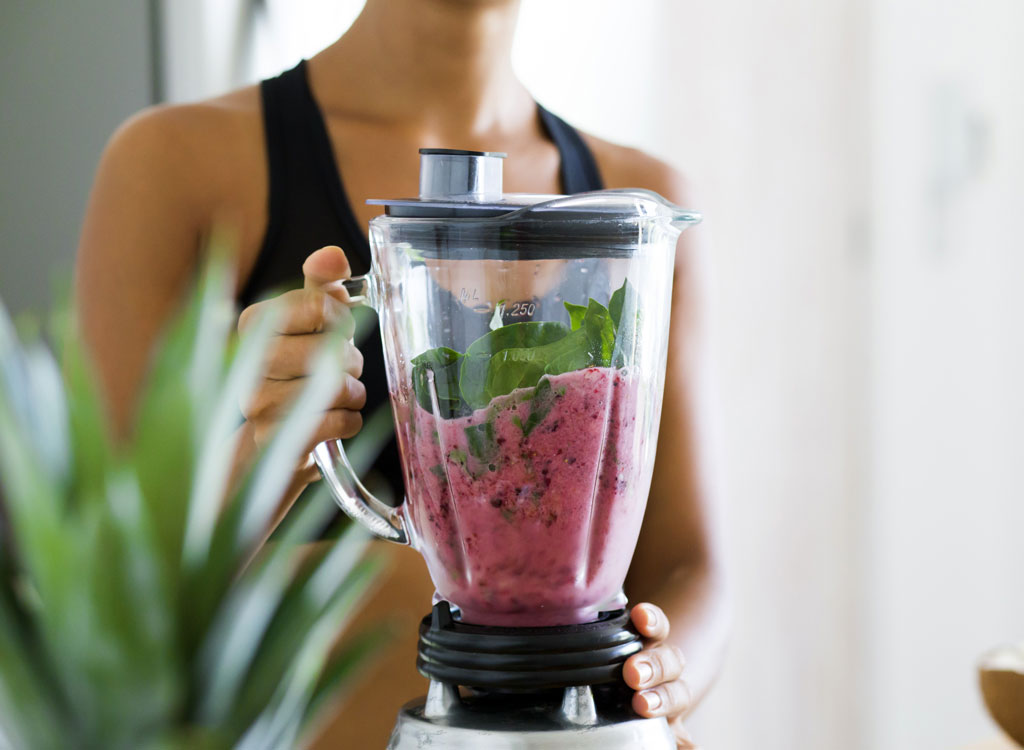
By week two, I noticed a marked difference. I had already lost two pounds! I felt more comfortable in my clothes and was experiencing less bloating. More importantly, I had more energy and my mood improved. I was especially delighted to find that my usual pre-menstrual symptoms—anger, irritation, depression—were much milder in this week leading up to my period. I scarcely noticed my PMDD, which usually first turns me into a hot-headed mess and then sends me into a week-long depression.
Amy was thrilled to hear about my rapid progress and introduced smoothies into my healthy snack arsenal. She warned me, “Don’t turn your smoothie into a dessert!”
Amy’s six smoothie tips helped me craft healthy snacks:
1. Use unsweetened almond milk as a base.
2. Add veggies, like ½ a cup each of frozen spinach and frozen cauliflower, to balance out the sweetness of the fruit and provide a serving of veggies in the morning.
3. Choose your fruit: While many people load their smoothies with fruit, Amy recommended sticking to either half a banana or ¾ cup of berries.
4. For protein, she told me to choose from one tablespoon of all-natural peanut butter; chia seeds, cinnamon, and 5 ounces of yogurt; ½ cup of cottage cheese; or one scoop of protein powder. Amy’s top choices for protein powders are Tera’s Whey, Garden of Life Organic Plant Protein, Moonjuice, and Amazing Grass.
5. In terms of added sweeteners? There shouldn’t be any. Since I don’t like vanilla- or chocolate-flavored protein powder, she suggested adding a few drops of liquid stevia (rather than honey or agave) for sweetness.
6. For a boost of flavor, choose spices like ginger or turmeric while blending.
WEEK THREE
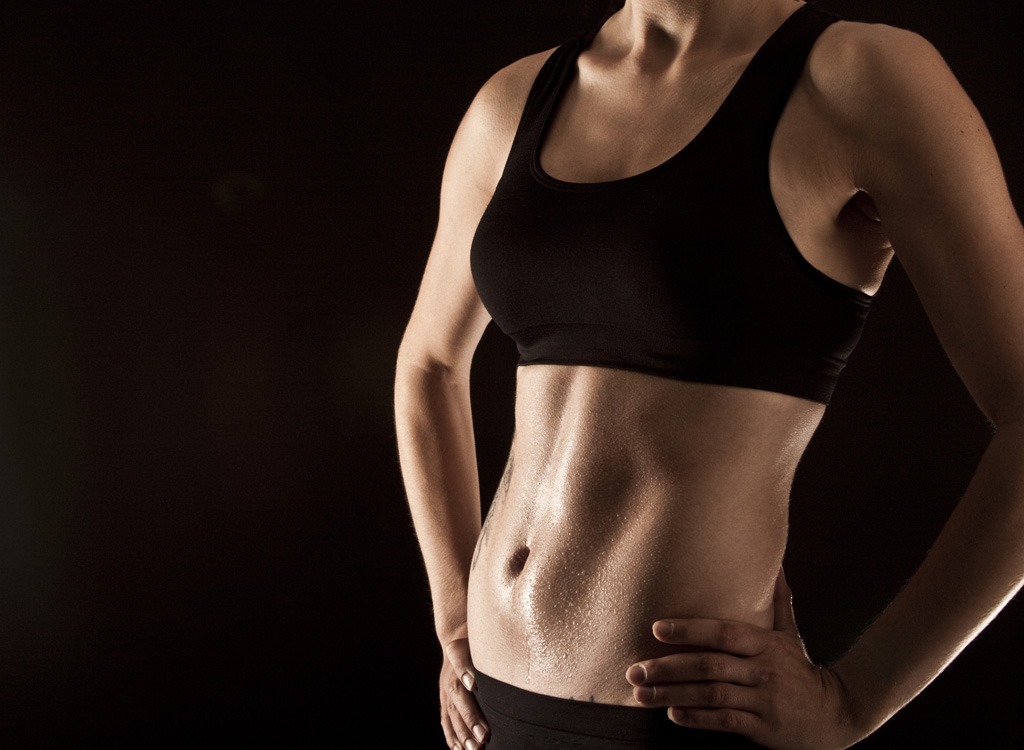
By week three, I was holding steady around 97 pounds and realized that this was probably my most natural weight. I’d reduced much of the fat around my belly and felt energetic and bloat-free. Though it may not sound like much, a 3.8-pound loss is significant in my 4’8″ body and I felt different. I’ve built muscle as a yoga teacher, but previously my abs were concealed behind a layer of fat. I was starting to see the definition of my rectus abdominis once again. Welcome back six-pack!
Of course, I’d experienced slip-ups, like the day I ate an entire bag of Brownie Brittle, which I’d brought home for my daughter’s play-date. It had been a trying day and I was craving comfort food. My big win was that instead of wallowing in guilt or allowing my slip-up to initiate a downward spiral, I forgave myself and jumped right back into my nutrition plan. That very night, at my daughter’s school gala, I made healthy choices, sampling fresh proteins (sashimi and sliced meats) instead of going hog-wild on the dessert buffet.
By week three, I’d developed a habit of packing snacks, eating more frequently, and not leaving my meals up to chance. But with Passover around the corner, which was to include a six-day trip to the midwest to visit family, I was getting anxious. How could I maintain my routine among matzah lasagna, potato kugels, and brisket? Plus, it was my daughter’s birthday over Passover so there was bound to be cake. Amy reassured me that my nutrition plan could be adapted for real-life situations like vacations (ergo the “real” in Real Nutrition) and promised we would have strategies for Passover on our next call.
WEEK FOUR
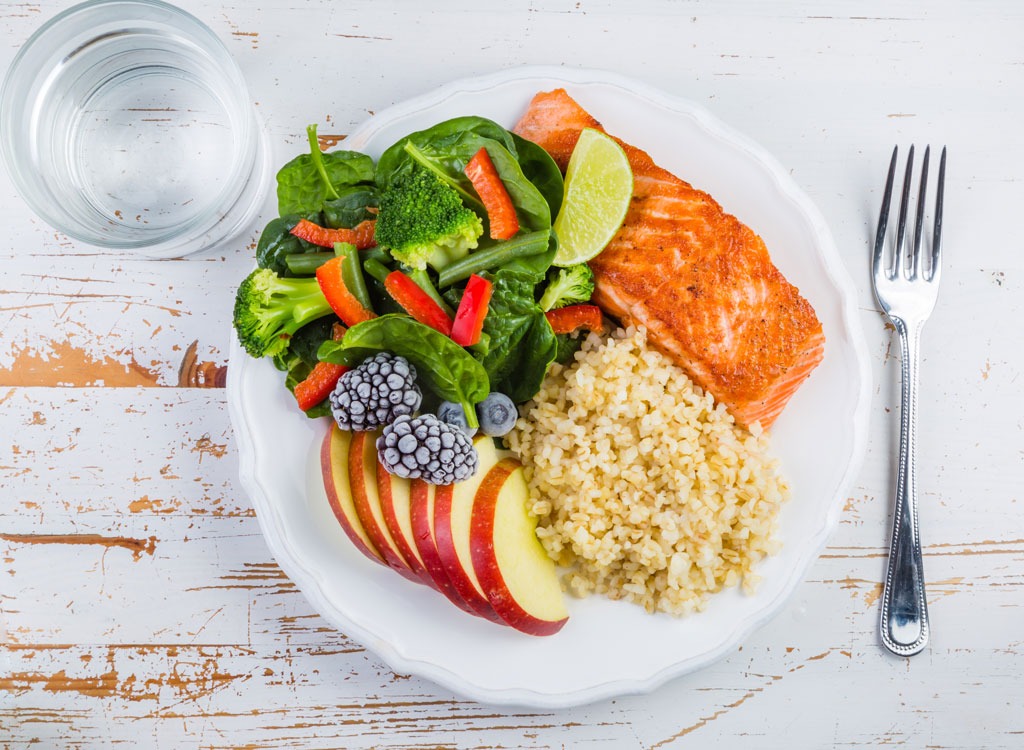
Things got real with our last call. What happens when you’re far from home, without your Chia Bars, and surrounded by new stresses and temptations? Amy suggested that since I’d swap out leaven for matzah, limit myself to two pieces of matzah per day and create a MyPlate-style ratio for Passover: ½ plate of veggies, ¼ plate of protein, ¼ plate of carbs or other tempting items. If I wanted seconds, I’d have more veggies or protein but pass on the matzah lasagna and eggplant parmesan. “There’s always another opportunity to eat,” she reminded me, a refrain that helped me immensely through six consecutive days of heavy family meals.
Not surprisingly, I was up to 98.7 pounds when I returned after a fairly sedentary week of seders, birthday cake, and family stress. Still, it was easy for me to get back on track once I returned to my regular routine. In only a few days I was back to my fighting weight of 97 pounds, and by the end of the month, I’d dropped an additional pound. Two-weeks post-experiment and I’m still following her guidelines—with the occasional slip-up—and feeling great.
In the end, Amy’s plan helped me become more responsible and accountable for my own nutrition. Some habits, like eating a pastry a day and having dinner at 11 p.m. were obviously bad for me, but like most people, I needed some simple tools and guidelines to make the wise choices and get into a different nutritional groove.
Best of all, no one thinks I’m pregnant!
